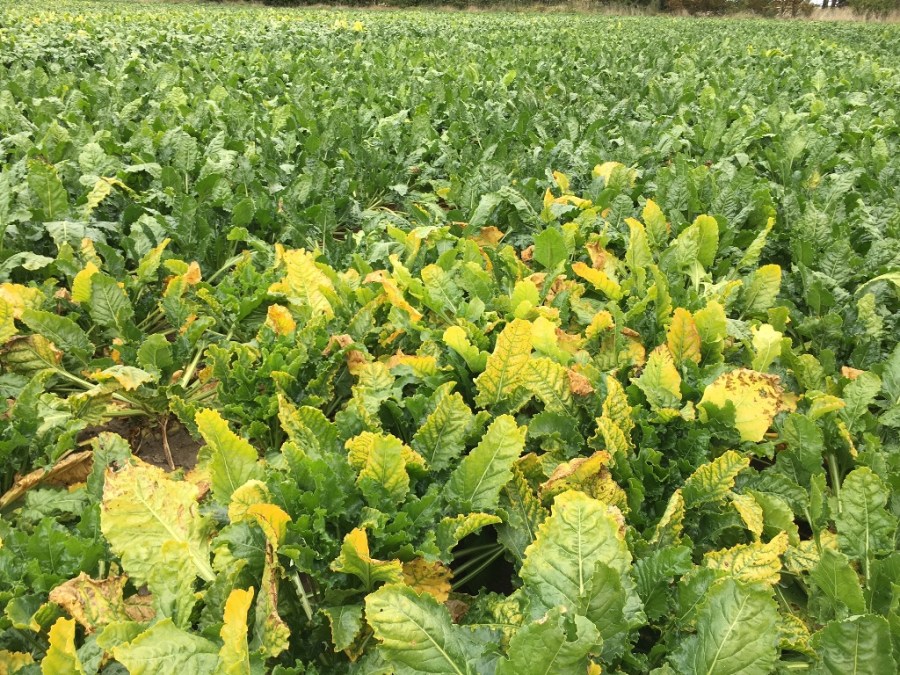The British Beet Research Organisation (BBRO) has issued an advisory notice, warning growers that the 2019 virus forecast is high due to the potential impact of the mild winter on aphid populations. CPM reports.
The 2019 virus yellows forecast, issued by the BBRO, has predicted a high threat this year as a result of the mild winter and the exceptionally warm conditions experienced at the end of February.
The forecast highlighted that crops sown by the 15 April window could experience virus yellows levels at the end of August of 54.3% in the East and 47% in the North.
Following the ban of neonicotinoids, this warning comes at a particularly worrying time for the industry.
“This is the first time in 25 years that neonicotinoid seed treatments have not been used to protect the crop, said the firm’s spokesperson. “Timely applications, good crop hygiene, crop monitoring and ensuring the crop reaches the 12-leaf stage as quickly as possible will all be crucial in minimising virus risk in 2019.”
In order to keep virus levels to a minimum, the BBRO has issued the following advice for growers:
- Sources of virus
The risk of virus infection will be influenced by a range of factors, and despite some frosts, aphids have been able to over-winter and are being found in crops including oilseed rape and volunteer potatoes.
Any crops grown near to winter OSR can be at higher risk of aphid colonisation.
It is vital to remove sources of plant material which may already be infected, providing sites for infection to spread into crops.
Check spoil heaps and beet piles left on farm for leaf growth and destroy.
Keep an eye out for groundkeepers and target herbicide programmes to control these.
- Soil temperatures
Live soil monitoring shows temperatures have continued to increase with most now registering above 5oC. This is important to note as seed germination will start at 3oC but will be slow below 5oC.
Take soil temperatures at 5-10cm depth to check individual fields, as there may be field-specific variation, depending on soil type, aspect and topography.
- Bolting
Early drilled crops are at a greater risk of bolting, especially in areas where soils will remain colder for longer, such as the Fen peats and Lincolnshire Wolds.
Remember that bolting is triggered by accumulated low temperatures and not by specific low temperature events. This applies from the start of germination through to June.
- Earlier drilled varieties
Use a variety which is at lower risk of bolting and not listed as unsuitable for drilling before mid-March on the 2019 RL.
Varieties listed as not suitable for drilling before mid-March include Sabatina KWS, Salamanca KWS, Hornet, Springbok, BTS1140, Cantona KWS, BTS 860, Degas and Philina KWS.
- Different varieties
Mark up different varieties as you drill them to ensure you can clearly identify any issues and assess them for herbicide, aphicide and fungicide application.
Keep a copy of the blue certification label on each pack of seed as a traceability reference.
- Cultivations
While frustrating, dry soil conditions pre-drilling are an opportunity to undertake final cultivations of undesirable seedbeds.
With surface conditions being dry, levelling and incorporating dry soil will allow seedbed moisture to be optimised.




